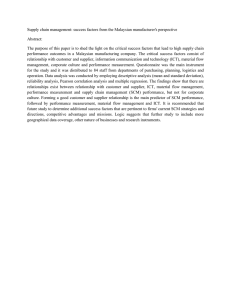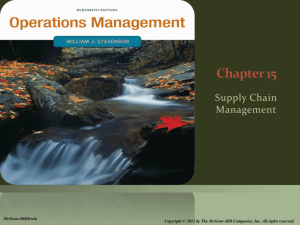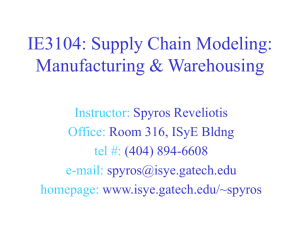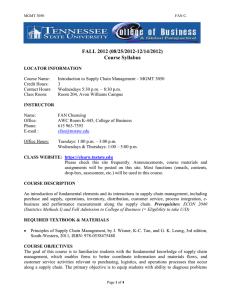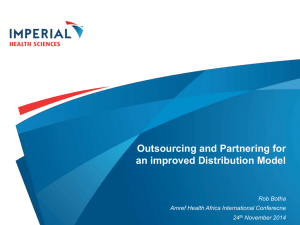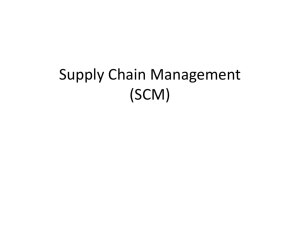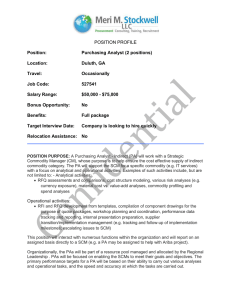- Supply chain management ppt
advertisement
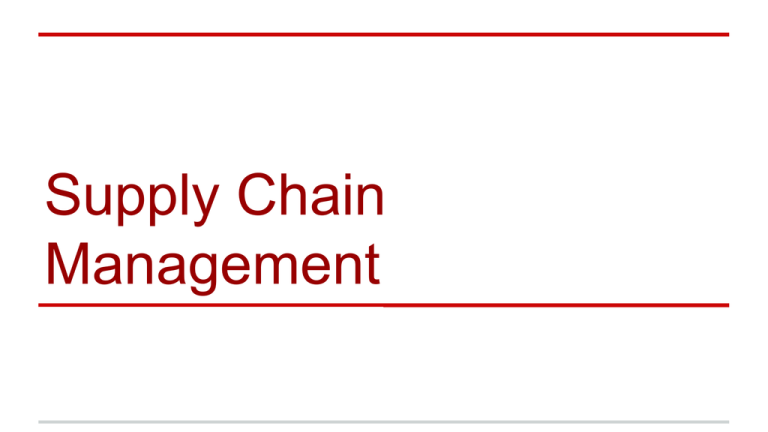
Supply Chain Management What is the supply chain management? Supply chain management (SCM) is "the systemic, strategic coordination of the traditional business functions and the tactics across these business functions within a particular company and across businesses within the supply chain, for the purposes of improving the long-term performance of the individual companies and the supply chain as a whole." History of SCM : Six major movements can be observed in the evolution of supply chain management studies: 1 - Creation era : in the early 20th century 2 - Integration era : in the 1960s 3 - Globalization era : in the late 1980s Main functions of Supply Chain Management are as follows: Inventory Management Distribution Management Channel Management Payment Management Financial Management Supplier Management Transportation Management Customer Service Management Importance : Organizations increasingly find that they must rely on effective supply chains, or networks, to compete in the global market and networked economy. This concept of business relationships extends beyond traditional enterprise boundaries and seeks to organize entire business processes throughout a value chain of multiple companies. Business process integration : Successful SCM requires a change from managing individual functions to integrating activities into key supply chain processes. In an example scenario, a purchasing department places orders as its requirements become known. The marketing department, responding to customer demand, communicates with several distributors and retailers as it attempts to determine ways to satisfy this demand. Information shared between supply chain partners can only be fully leveraged through process integration. The key supply chain processes are : ❏ ❏ ❏ ❏ ❏ ❏ ❏ ❏ Customer relationship management Customer service management Demand management style Order fulfillment Manufacturing flow management Supplier relationship management Product development and commercialization Returns management a. Customer service management process : Customer relationship management concerns the relationship between an organization and its customers. Customer service is the source of customer information. It also provides the customer with real-time information on scheduling and product availability through interfaces with the company's production and distribution operations. b) Procurement process : Strategic plans are drawn up with suppliers to support the manufacturing flow management process and the development of new products. In firms whose operations extend globally, sourcing may be managed on a global basis. The desired outcome is a relationship where both parties benefit and a reduction in the time required for the product's design and development. c) Product development and commercialization Here, customers and suppliers must be integrated into the product development process in order to reduce the time to market. As product life cycles shorten, the appropriate products must be developed and successfully launched with ever-shorter time schedules in order for firms to remain competitive. d) Manufacturing flow management process The manufacturing process produces and supplies products to the distribution channels based on past forecasts. Manufacturing processes must be flexible in order to respond to market changes and must accommodate mass customization. Orders are processes operating on a just-in-time (JIT) basis in minimum lot sizes. Changes in the manufacturing flow process lead to shorter cycle times, meaning improved responsiveness and efficiency in meeting customer demand. e) Physical distribution : This concerns the movement of a finished product or service to customers. In physical distribution, the customer is the final destination of a marketing channel, and the availability of the product or service is a vital part of each channel participant's marketing effort. f) Outsourcing/partnerships : This includes not just the outsourcing of the procurement of materials and components, but also the outsourcing of services that traditionally have been provided in house. The logic of this trend is that the company will increasingly focus on those activities in the value chain in which it has a distinctive advantage and outsource everything else. g) Performance measurement : Experts found a strong relationship from the largest arcs of supplier and customer integration to market share and profitability. Taking advantage of supplier capabilities and emphasizing a long-term supply chain perspective in customer relationships can both be correlated with a firm's performance. h) Warehousing management : To reduce a company's cost and expenses, warehousing management is carrying the valuable role against operations. In the case of perfect storage and office with all convenient facilities in company level, reducing manpower cost, dispatching authority with on time delivery, loading & unloading facilities with proper area, area for service station, stock management system etc. Systems and value : Systems and value : Supply chain systems configure value for those that organize the networks. Value is the additional revenue over and above the costs of building the network. Co-creating value and sharing the benefits appropriately to encourage effective participation is a key challenge for any supply system. Tony Hines defines value as follows: "Ultimately it is the customer who pays the price for service delivered that confirms value and not the producer who simply adds cost until that point". Global applications : Global supply chains pose challenges regarding both quantity and value. Supply and value chain trends include: ● ● ● ● ● Globalization Increased cross-border sourcing Collaboration for parts of value chain with low-cost providers Shared service centers for logistical and administrative functions Increasingly global operations, which require increasingly global coordination and planning to achieve global optimums ● Complex problems involve also midsized companies to an increasing degree These trends have many benefits for manufacturers because they make possible larger lot sizes, lower taxes, and better environments (e.g., culture, infrastructure, special tax zones, or sophisticated OEM) for their products. Thank you
